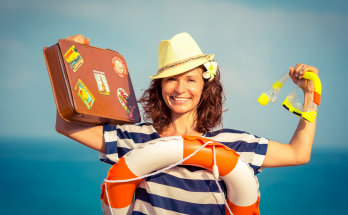Shelter in place orders have been lifted and while you may have gotten used to wearing a mask or even ventured into dining indoors, you may be wondering if it is really safe to travel by plane. There is so much conflicting information: Are airlines helping passengers maintain social distance on planes or packing you in? How can they possibly keep baggage areas clean? What about masks – is everyone wearing one?
If you, after more than half a year staying put, are wondering how to finally travel and visit with loved ones, especially with the holidays approaching, here are some suggestions that may help you stay safe while flying during the pandemic.
Before you fly anywhere, be sure to check each state or country’s guidelines and restrictions. Some states such as many New England states, have mandatory quarantines. The situation is fluid throughout the country so it is important to stay up to date from the time you plan your trip until you actually leave.
Follow CDC Guidelines
The CDC flat-out tells you not to travel if you have been in contact with someone who tested positive for COVID in the last 14 days or are feeling ill yourself. Beyond that, it recommends you check the number of cases at the destination to which you are flying to see what the risks may be. While the CDC notes the close proximity on planes could be a risk factor, it does suggest the virus does not spread easily on flights because of how air is circulated and filtered in airplanes. The filters actually catch microbes in the air, says the International Air Transportation Association.
Mask Up
From the moment you enter the airport until the moment you leave the airport at your destination, you should be wearing a mask that fits tightly around your nose and beneath your chin. Airlines have stopped offering beverage and snack service but do provide bagged snacks and you are welcome to remove your mask to eat or drink, but if you can avoid it, do so. Be sure to eat before your flight so you aren’t hungry.
Wash, Wash, Wash
At every opportunity you can wash your hands, do so. Carry a travels-sized hand sanitizer with at least 60 percent alcohol and use it when you clear TSA, board the plane, use the lavatory, and pick up your luggage. Carry antibacterial wipes and wipe down your arm rests, tray table, seatback touchscreen, window blinds and seatback pocket.
Don’t Touch Anything
Limit contact with what you touch, this includes your eyes, nose and mouth but also handrails, kiosks, and other surfaces at the airport and on the plane.
Pick the Window Seat
Selecting the window seat puts you further from people who walk the aisles to use the lavatories, often touching the aisle seats for balance. A window seat keeps you secluded and, if you can avoid a trip to the lavatory, hold it until you deplane and limit your movement. At check-in, review the seating plan for your flight and seek out seats that provide social distancing, if possible.
Don’t Line Up for Boarding
The days of trying to board a flight first are over. Avoid any groups boarding together and maintain your 6-foot distance by boarding at the end of a flight when there are no longer backups of people trying to board. Wait patiently for the end, although this means you may not get to carry on items unless they fit beneath the seat in front of you.
Stay Hydrated
Although the air on the plane may not be more dangerous, the low humidity that dries you out can dry out the mucous your body makes to block out viruses. Be sure to drink lots of water and consider a nasal spray to moisturize your nose.
Pass on the Crowded Flight
If your flight is full, airlines are allowing passengers to switch to less-crowded flights. Some of the least busy times for flights are evening flights, particularly those that are the last flights of the night. Consider taking a flight off-peak, which is typically between 8 a.m. and 5 p.m.



